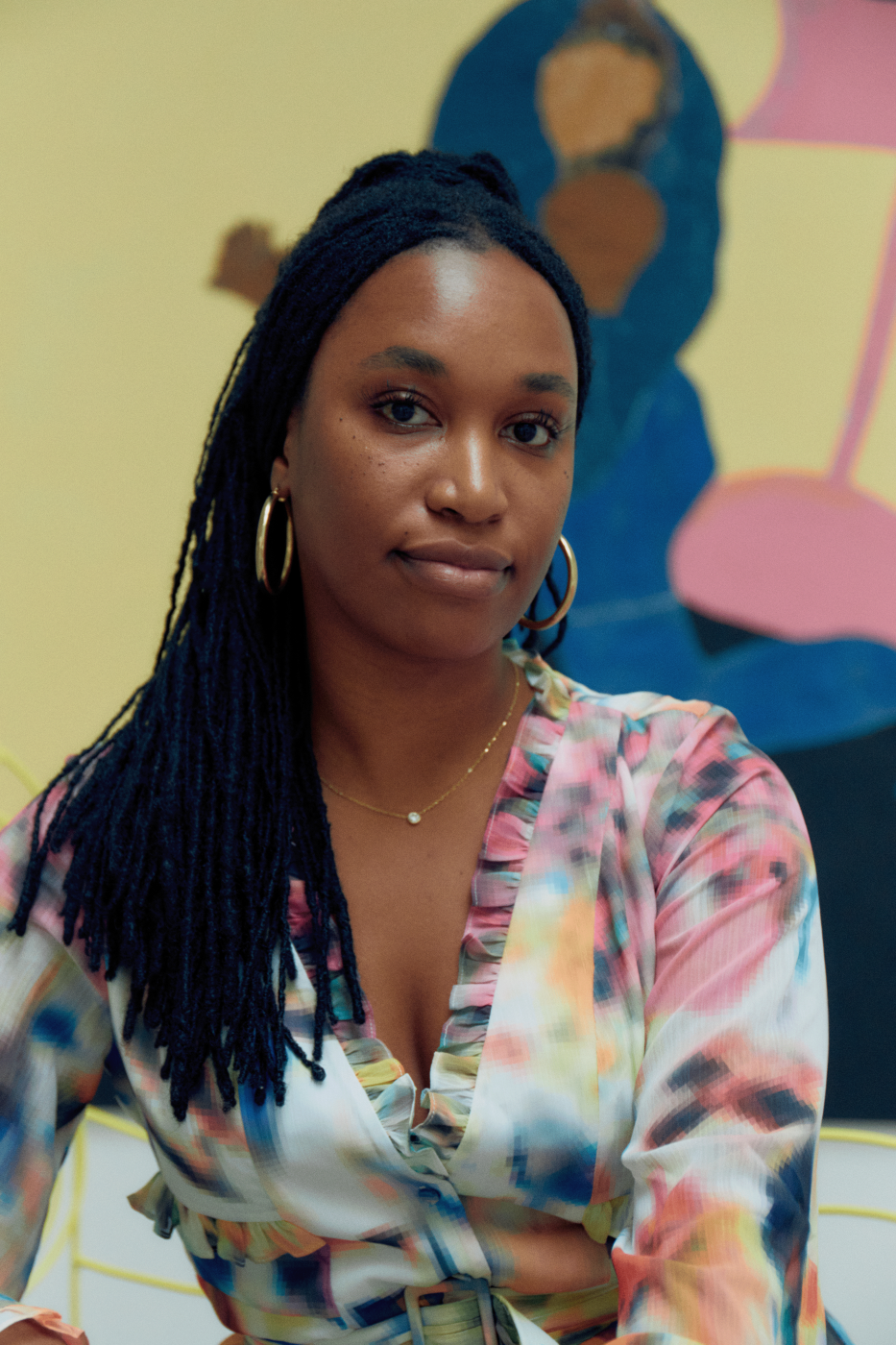Galerie Eva Presenhuber is pleased to present Spaces and Places, the gallery’s second solo exhibition by American artist Tschabalala Self.
At the time the works for this exhibition were being made, Self was preparing to move her studio from New Haven, Connecticut to Catskill, New York. As the awkward, cold days of early spring slowly grew surer and warmer it was a veritable period of transition. This notion of an in-between, or “spaces” and “places” as it is also referred to in Michael Newton’s book of New Age philosophy, Journey of Souls: Case Studies of Life Between Lives (1994), denotes an unnameable and unphysical environment outside of our dimension and comprehension. Newton refers to “the cosmology of all spiritual locations as places, or spaces, simply for convenient identification because we are dealing with a non-physical universe.” It is this liminal and mythic sensation—an unlocatable place for life between lives— which Self expresses in these new works, using synaesthetic colour fields and collaged textiles to develop her intricate fantasies rooted in a humanistic understanding of personhood.
Self’s approach is playful and accumulative. In the new painting, Two Headed (2023), varied toned scraps of fabric collected over time are stitched together to create a figurative female form. These contemplative figures are then appliqued and painted onto the substrate of the canvas. Within these works, the artist applies the self-determinist and affective logic inherent to Black American quilting traditions: the people in the paintings are born of a patchwork of memories, imbued with projections of the mythology of Blackness.
The subjects idle and reflect. They occupy the furniture—specifically chairs—embracing and becoming entangled with it. Many canvases look deep into a room: three-point vanishing perspective creates corners where floor-meetswall and wall-meets-ceiling. With casual inclusions of details such as windows and hardwood floors in Baton Rouge (2023), Self justifies the typically private domestic interior as a transitory zone. Reflecting on how relationships to the domestic space as a strictly personal site have changed in recent years, Self suspends not only her characters’ subjectivity but also the idea of the home as an absolute safety. With Leisure Painting Series (2022-), Self articulates a Surrealist slippage akin to that of Louise Bourgeois’ Femme Maison (1946-47; 1984; 1994; 2001) series of drawings, paintings, and sculptures of nude female figures whose torsos and heads have been replaced by houses and other architectural constructions.
Self does not actively interchange subjecthood and objecthood as much as create tensions between their distinction. While prop chairs used during Sounding Board (2021), a two-character play performed by four actors, are found in the wall works in the space, implying the absence of a sitter, ten new paintings in the Leisure Painting Series (2023) show figures based on the characters embedded in chairs. In the play, which is set in a mock domestic interior, characters A and B and their doubles swap lines and regurgitate dialogue, producing an overlapping cacophony of accusations—“You can’t live in a house that’s built upon your back!” they cry. In lieu of the live performance during which lines are repeated to the point their meaning is transformed, Self suffuses the Leisure paintings with repetitive gestures as a generative action.
With her interdisciplinary, research- and practice-led approach, Self yields multitudes out of canvas, paint, and thread. Caught between obfuscation and hypervisibility, Self’s figures are the product of the complex power dynamics of Black subjectivity.
Olamiju Fajemisin
TSCHABALALA SELF
Seated Woman 1
2023
Bronze with patina and oxides with wax coating
Ed.3/3 + 2 AP 156 x 96 x 95 cm / 61 3/8 x 37 3/4 x 37 3/8 in
SELF 57840

In process and presentation, Tschabalala Self’s work explores the agency involved in myth creation and the psychological and emotional effects of projected fantasy. Self has sustained a practice wholly concerned with Black life and embodiment, with an intended audience from within that same community. In a flurry of stitches, Self assembles fully formed characters who, individually and situationally, hold power over their self-presentation and external perception. A power frequently denied to Black American people in their daily lives.